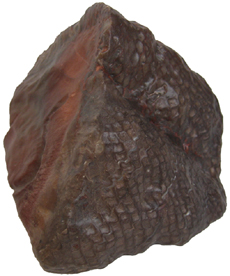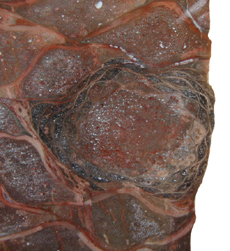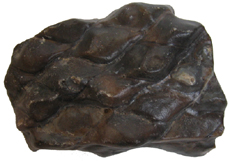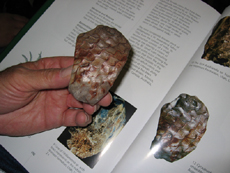
 |
 |
Science
Olympiad
| Division (Phylum) Cycadophyta | |
Cycadopytes made up a significant portion of the Mesophytic flora. The Mesozoic is sometimes referred to as the "age of cycads". Cycadophytes are gymnosperms that have a superficial resemblance to the flowering palms. Cydadophyte trunks range from short and squat to tall and columnar. Stems are covered with a protective layer of persistent leaf bases. Leaves can be scale-like or in the form of fern-like fronds. One living and one extinct order are recognized within this division. Cycadales True
cycads,
both living and extinct belong to the order Cycadales.
Cycads range from the Permian to recent times. All members
of Cycadales are dioecious (they have male and female plants).
Living cycads have cones at the apex of the stem. Pollen
cones
are small and compact. Male gametes
carried by the pollen are flagellated, a primitive characteristic
shared
with Ginkgo
biloba (Taylor, Taylor, and Krings,
2009, p. 706). Leaf traces arise from the vascular cambium
and spiral upward
around
the stem before entering the leaf (girdling leaf traces).
Cycadales have a eustele stem. In cross-section a massive
central core of pith is surrounded by vascular
tissue. An outer layer of bark encases the vascular cambium
and pith. Pinnate, frond-like leaves form a rosette at
the top of the trunk. The upper
stem is clothed in scale leaves, which eventually form
a fibrous sheath around the stem. Leaf bases covering
the trunk provide a firm outer layer. Cycadeoidales
or Bennettitales |
|
 Cycadeoid Trunk Section Cretaceous Rio Negro, Argentina 13 cm x 11cm |
 Cycadeoid Cone Embedded Among Leaf Bases Cretaceous Rio Negro, Argentina Cone 3 cm across |
 Cycadeoid Leaf Bases Cretaceous Rio Negro, Argentina 10 cm x 6 cm |
 Cycadeoid Cone Embedded Among Leaf Bases Cretaceous Rio Negro, Argentina |
Bibliography |
|
Kenrick, P. and Davis, P. (2004). Fossil Plants. Smithsonian Books: Washington. Taylor,
T.N., Taylor E.L. & Krings, M. (2009). Paleobotany:
The Biology and Evolution of Fossil Plants [2nd
Ed]. New York: Academic Press. |
|










